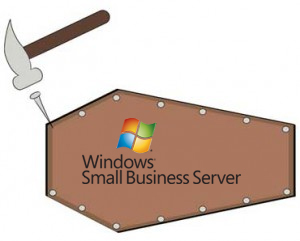As you may or may not know, the end-of-life date of Windows Small Business Server 2003 is July 14, 2015. This means Microsoft will be terminating services for the line, services that provide crucial security updates and patches. This termination will be akin to the Windows XP termination this past April: XP can still run on desktops, but the product is off the shelf both commercially and in terms of Microsoft’s internal support; vulnerable, it is a security disaster waiting to happen and generally will not pass regulations. The problems in upgrading a server are similar but far bigger, and the popular mad-dash-switch strategy is not feasible for companies relying heavily on fully-operational 24/7 server activity. The whole infrastructure of a system, in many cases carefully built up over years, needs to be reworked – and this takes time, time that can be born only out of ample foresight. Though the end-of-life for the Small Business Server 2003 is a year away, the question must be asked now: what are we going to do about upgrading?
 (Image courtesy of blog.zensoftware.co.uk)
(Image courtesy of blog.zensoftware.co.uk)

 In previous blog entries, the expression “cloud” has often been used, and as it has been already stated, it refers to a friendly way of describing web-based computing services that are hosted outside of an organization. This means that when an user has been provided with cloud-based services, the entire IT infrastructure is located outside its property, and hosted and maintained by a third party. This brief description allows me to introduce you to Office 365 as guest of honor of the following set of articles. In fact, Office 365 information storage, computation, and software are located and managed remotely on servers owned by Microsoft. Many services you use every day are a part of the cloud, and since its infrastructure is located online or "in the cloud," you can access them virtually anywhere, from a PC, tablet, smartphone, or other device with an Internet connection.
In previous blog entries, the expression “cloud” has often been used, and as it has been already stated, it refers to a friendly way of describing web-based computing services that are hosted outside of an organization. This means that when an user has been provided with cloud-based services, the entire IT infrastructure is located outside its property, and hosted and maintained by a third party. This brief description allows me to introduce you to Office 365 as guest of honor of the following set of articles. In fact, Office 365 information storage, computation, and software are located and managed remotely on servers owned by Microsoft. Many services you use every day are a part of the cloud, and since its infrastructure is located online or "in the cloud," you can access them virtually anywhere, from a PC, tablet, smartphone, or other device with an Internet connection.
